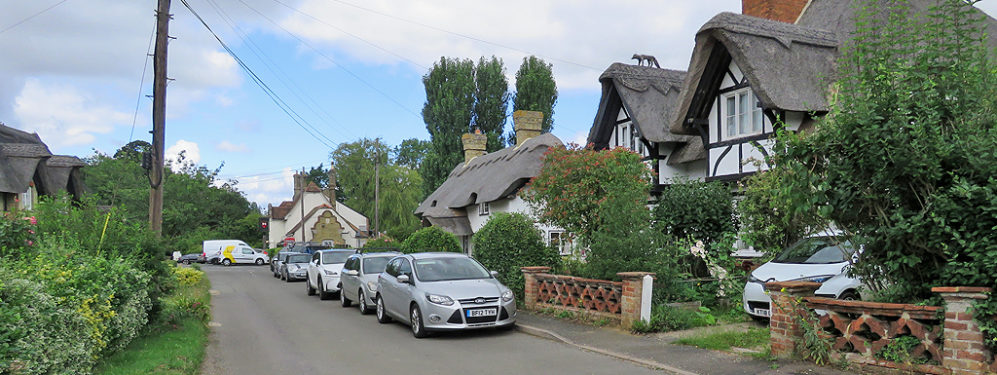Sunday April 25th 2021 is Huntingdonshire Day. In celebration we present our portrait of the county. A map of the county can be found at:
http://www.gazetteer.org.uk/map/#Huntingdonshire/centre=52.372,-0.224/zoom=11
Huntingdonshire is an inland county between the Midlands and East Anglia. One of the smallest of the counties, Huntingdonshire is a county of pretty little villages with a few small towns.
Huntingdonshire is roughly rhomboid in shape. Huntingdon, the county town, stands in the middle of the county on the River Great Ouse, at the meeting of the Great North Road (A1) and the route from the east coast to the Midland towns (A14). The High Street has many charming old houses, shops and coaching-inns. The town has a well-preserved mediæval bridge. Oliver Cromwell was born in a house on Huntingdon High Street. The Cromwell Museum is located in the former grammar school building in which Cromwell received his early education.
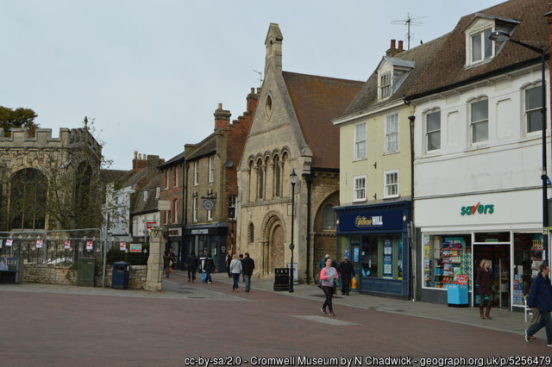
The south of Huntingdonshire is a rich agricultural landscape characterised by farming and picturesque villages. The Great River Ouse enters Huntingdonshire at St Neots. The town is named after the Cornish monk whose bones were moved to the Priory here from St Neot on Bodmin Moor in around AD 980. Pilgrimage to the priory church brought the town prosperity. Today St Neots is a thriving market town and commuter town. Buckden Towers is a 12th-century fortified manor house in the village of Buckden.
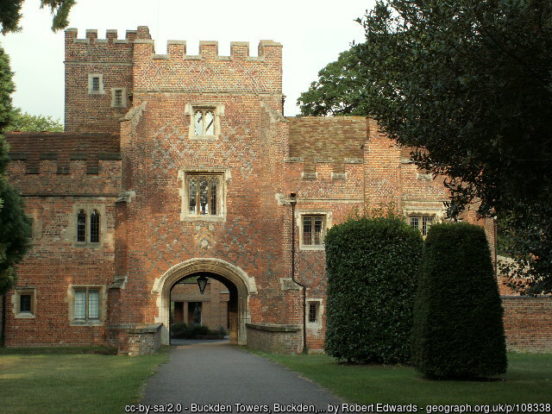
The county’s highest point lies close to the Three Shire Stone marking where Huntingdonshire, Northamptonshire and Bedfordshire meet. At 263 feet it is the lowest county top in all the counties. Nearby is the splendid Kimbolton Castle. Catherine of Aragon was imprisoned and died here in 1536.
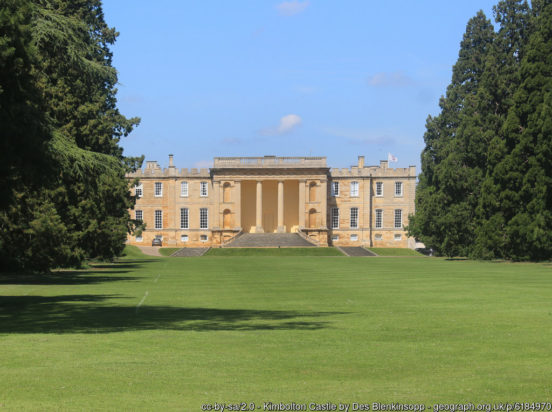
Upstream, just south of Huntingdon, is Godmanchester. The town has many timber-framed Tudor houses and a mediæval bridge connecting it to Huntingdon. To the west, Brampton is associated with Samuel Pepys, the diarist, whose house, Brampton House, stands outside the village. Between Godmanchester, Huntingdon and Brampton lies Britain’s largest meadow, Portholme, an important flood plain. In past days it served as a horse race course and centre for early aviation. The modern-day racecourse lies east of Huntingdon.

From Huntingdon, the Great Ouse flows east to the pretty market town of St Ives, famous for its mediæval bridge with a chapel in the middle.
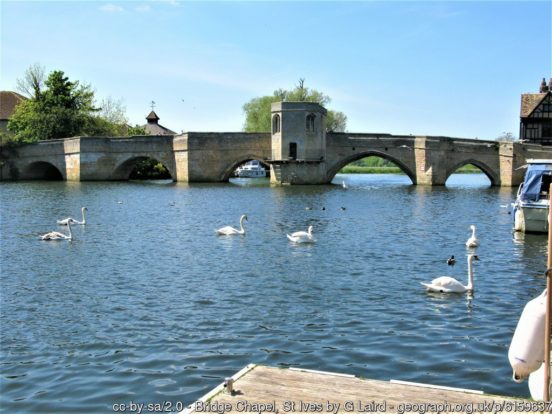
East of the town the Great Ouse turns north and becomes the border with Cambridgeshire before tuning east again into Cambridgeshire.
North of Huntingdon lies the county’s share of the Great Fen, long since drained and converted into broad, fertile arable fields. There are many small, pretty hamlets and villages scattered across the fen. The only town of any size is Ramsey. The town’s manor house, still known as Ramsey Abbey, is built on the site of an Anglo-Saxon abbey and of material from the abbey.

In the far north-west of the county, the southern suburbs of Peterborough (south of the Nene) including Fletton and the Ortons lie in Huntingdonshire. The large village of Yaxley lies south of these suburbs. To the west is the Grade-I-listed Elton Hall. The county border runs along the south-facing wall of the hall, leaving the hall itself in Huntingdonshire, whilst the formal gardens lie in Northamptonshire.
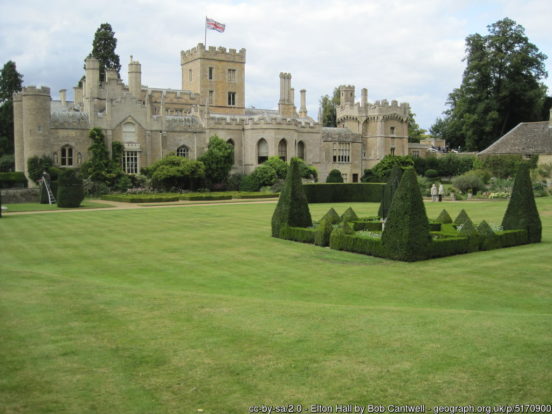
In prehistoric times the county mainly comprised forest and marsh. The Romans established the towns of Godmanchester and Chesterton. The Dark Age history of the area is not well understood. The Danes established headquarters in the town of Huntingdon in the 9th century, but about 915 Edward the Elder wrested the fen-country from the Danes, repairing and fortifying Huntingdon. The county of Huntingdon was probably formed around this period although the earliest record of the name, as ‘Huntadunscir’, is from 1011. Religious foundations were established at Ramsey, Huntingdon and St Neots in the 10th century, and that of Ramsey accumulated vast wealth and influence. Oliver Cromwell was born and raised in Huntingdon, though the county remained Royalist during the Civil War. Huntingdonshire has been mainly agricultural throughout its history. However, there is now much light industry and many computer technology companies, and around Huntingdon in particular road haulage thrives due to the county’s position.
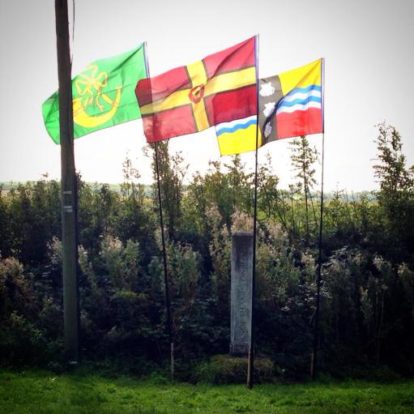
The Huntingdonshire Flag comprises a gold beribboned hunting horn, for centuries a county symbol, on a green background, which recalls the fertile fens of Huntingdonshire. Huntingdonshire Day is celebrated on on 25 April, the birthday of Oliver Cromwell.

